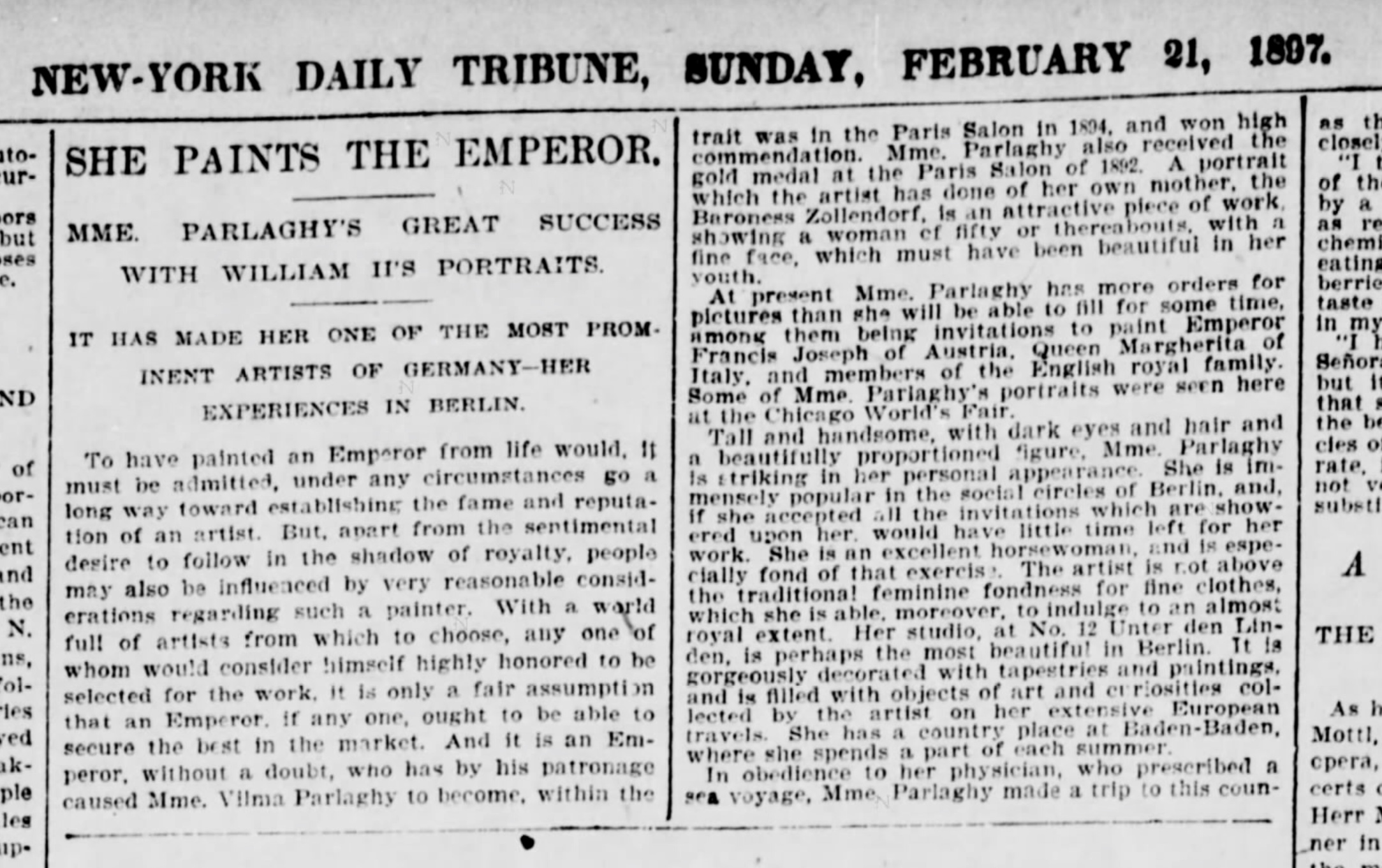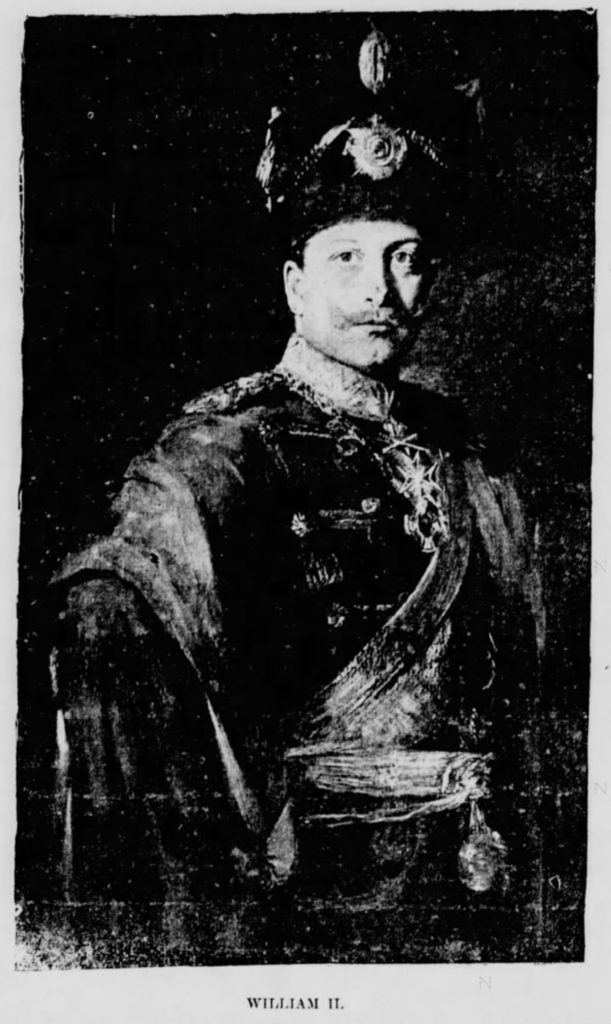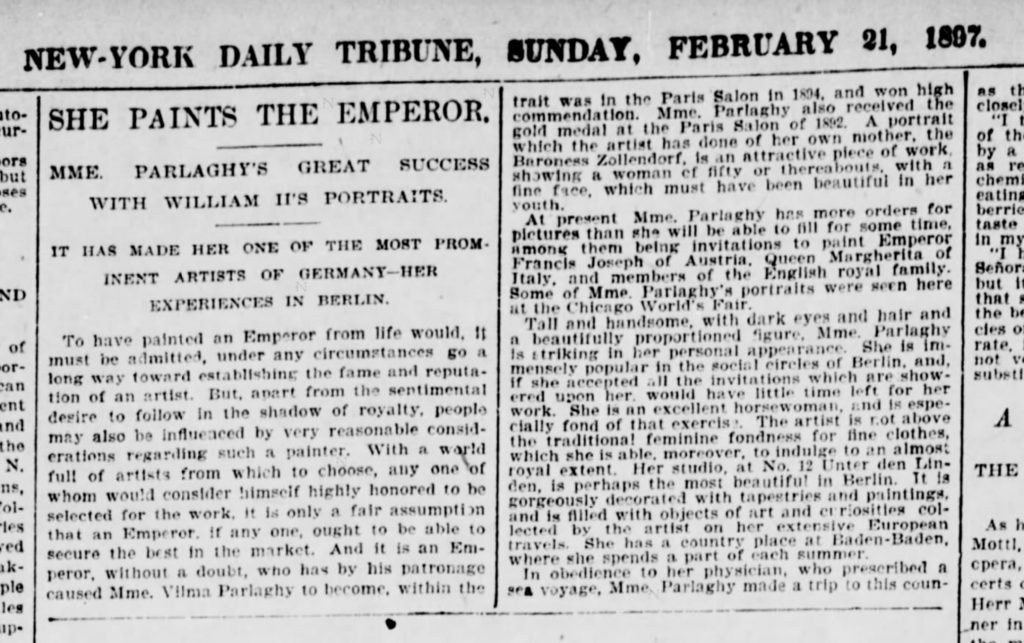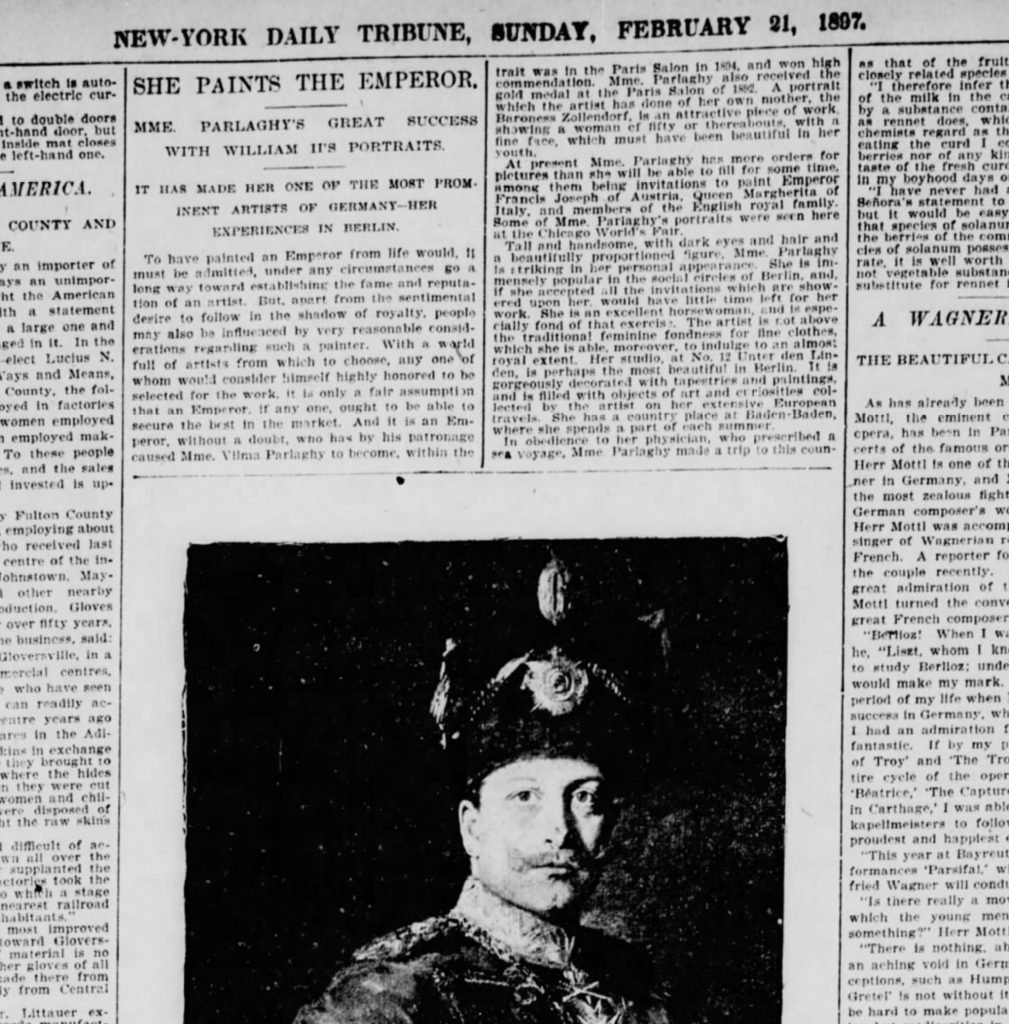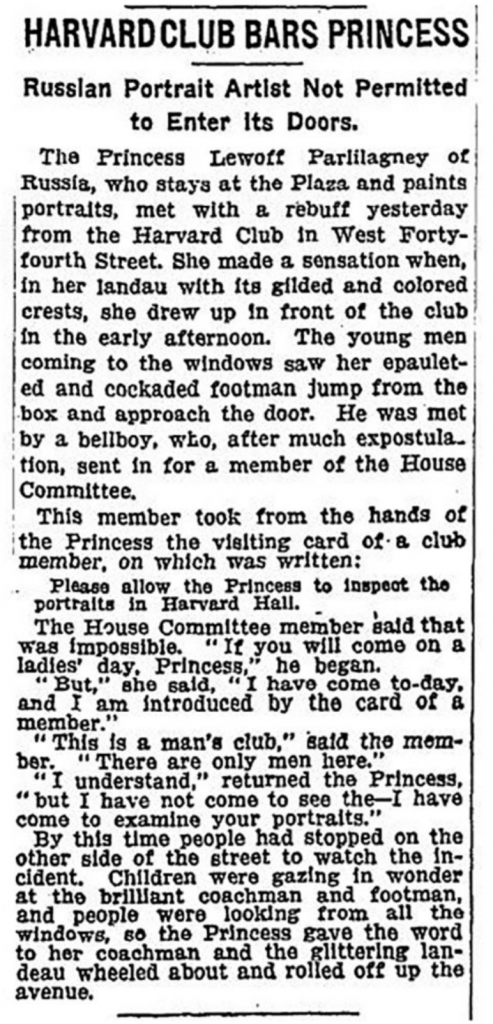It Happened on
February 21, 1897
She paints the Emperor
MME. PARLAGHY’S GREAT SUCCESS WITH WILLIAM I’S PORTRAITS
It has made her one of the most prominent artists of Germany-her experiences in Berlin.
To have painted an Emperor from life would, it must be admitted, under any circumstances go a long way toward establishing the fame and reputation of an artist. But, apart from the sentimental desire to follow in the shadow of royalty, people may also be influenced by very reasonable considerations regarding such a painter.
With a world full of artists from which to choose, any one of whom would consider himself highly honored to be selected for the work, it is only a fair assumption that an Emperor, if anyone, ought to be able to secure the best in the market. And it is an Emperor, without a doubt, who has by his patronage caused Mme. Vilma Parlaghy to become, within the…
(Missing content)
The portrait was exhibited in the Paris Salon in 1904 and won high commendation. Mme. Parlaghy also received the gold medal at the Paris Salon of 1902. A portrait that the artist has done of her own mother, the Baroness Zollendorf, is an attractive piece of work showing a woman at fifty or thereabouts, with a fine face that must have been beautiful in her youth.
At present, Mme. Parlaghy has more orders for pictures than she will be able to fill for some time, including invitations to paint Emperor Francis Joseph of Austria, Queen Margherita of Italy, and members of the English royal family. Some of Mme. Parlaghy’s portraits were seen here at the Chicago World’s Fair.
Tall and handsome, with dark eyes and hair and a beautifully proportioned figure, Mme. Parlaghy is striking in her personal appearance. She is immensely popular in the social circles of Berlin, and if she accepted all the invitations that are showered upon her, she would have little time left for her work. She is an excellent horsewoman and is especially fond of that exercise. The artist is not above the traditional feminine fondness for fine clothes, which she is able, moreover, to indulge to an almost royal extent.
Her studio, at No. 12 Unter den Linden, is perhaps the most beautiful in Berlin. It is gorgeously decorated with tapestries and paintings and is filled with objects of art and curiosities collected by the artist on her extensive European travels. She has a country place at Baden-Baden, where she spends part of each summer. In obedience to her physician, who prescribed a sea voyage, Mme. Parlaghy made a trip to this country.
